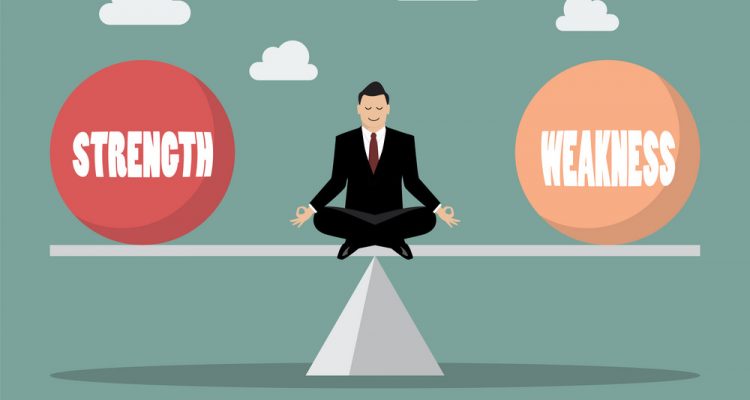Curated by the Knowledge Team of ICS Career GPS
Career

Can you separate your strengths from your weaknesses?
Excerpts from article by Rachel Botsman, published on LinkedIn
Performance reviews happen in companies all around the world, but a lot of them don’t serve the purpose. They typically involve a boss running through your strengths and weaknesses as if there was a clear dividing line. “You’re so principled but at times, too judgmental.”
Our strengths are the source of our weakness, and our weaknesses the source of our strengths. They are not separate or divided, but coexist. For instance:
- Being a high achiever can be a motivator, but not if it causes you to over-impose your standards on other people.
- Having strong empathy with your team is terrific, but not if people take advantage of you.
- Liking things to be organised and in order can be wonderful, but not if you can’t let go.
- Being persuasive is a powerful skill, but not if you use it to con or manipulate people.
Let’s rethink strengths and weakness through three lenses — context, outcomes and continuums
1. Context is King
My mind rarely stops trying to find connections and join dots. In my work, it’s a creative strength. There is no such thing as strength and weakness; it is all contextual. Developing situational awareness, knowing when to dial-up or down an aptitude is key for our relationships and personal development. A strength in overdrive will cause you problems in some situations.
2. Use your strength at the right time, in the right way
Organisations that claim to have “strength-based” cultures, purely focusing on the things people do well, also need rethinking. Here is what gets missed: You can easily overdevelop a strength. A strength used too much or inappropriately becomes a weakness. Think of the outcome you want and then think through how your strength shows up in the right place and in the right way.
3. Think in continuums, not opposites
So much of our world thinks in opposites — good versus bad, joy versus sorrow, healthy versus unhealthy, trust versus distrust. When you start to reframe ideas and concepts around continuums, it is absolutely transformative in how you think.
A continuum is something that keeps on going, changing slowly over time, like the continuum of the four seasons.
Performance reviews would be far more useful if we got rid of the “strengths and weaknesses” opposites list. Instead, we can help people think of specific traits and behaviours on a continuum in a specific context.
Education

Is the future of student reading digital?
Excerpts from article by Dr. Gene Kerns, published in elearninginside.com
Educators have known for years that students who read a lot outside of school perform well academically. Now, a recent annual study of student reading habits has found that digital reading doubled in 2020. The report indicates that digital reading could well be the future of student reading.
No substitute for Independent Reading
As students read more, they gain the ability to recognise more words instantly, which leads to more fluent reading. This continues to build. Each book provides more vocabulary, more background knowledge, and even sharper critical thinking skills. The impact on reading comprehension is significant.
When readers have strong orthographic representations (the abstract mental representations of the spellings of words), they use less of their brains’ processing power for decoding words, which leaves more capacity for actually comprehending what they are reading.
Additionally, as students encounter words more often, and used in different ways with alternative definitions, they can acquire vocabulary faster than they can via classroom instruction.
True comprehension requires many skills
Focusing on individual strategies has a ceiling of effectiveness, but building vocabulary and knowledge does not. True comprehension involves the integration of many skills, as well as vocabulary and background knowledge. They must all be practised together.
A report found that, between struggling readers who received extra time in social studies and those who received extra time in reading skills, the students with extra social studies time made better reading progress.
Digital reading increased 107% from year to year in 2020, with students finishing millions of books. Students are still reading at the same difficulty level and comprehending just as much as in previous years.
Digital reading: The future
The shift to distance learning may have caused an artificial boost in digital reading in this year’s report, but there’s still reason to believe that the future of student reading is going to be a lot more digital.
- Digital reading also improves access to books for students in a fundamental way.
- With a digital book, students have what they are interested in learning about in just a few clicks, right in the moment that they are engaged and interested in that topic.
- Increased reading of nonfiction is likely to continue as well.
- We will see more books related to diversity and inclusion in the coming years. Educators are looking for texts that will help their students understand some of the really complex and difficult questions that they are dealing with.
(Disclaimer: The opinions expressed in the article mentioned above are those of the author(s). They do not purport to reflect the opinions or views of ICS Career GPS or its staff.)
Like this post? For more such helpful articles, click on the button below and subscribe FREE to our blog.




